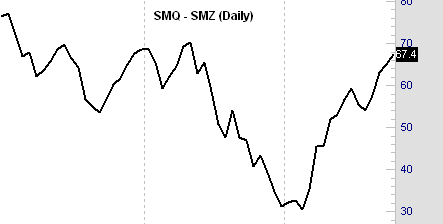FTSE Beater
Experienced member
- Messages
- 1,518
- Likes
- 6
Hi All
I've set this thread up to enable anyone new to trading spreads (me included) to ask questions.
Someone has asked me what is a spreads trade. I think Joe Ross explains it better.

I've set this thread up to enable anyone new to trading spreads (me included) to ask questions.
Someone has asked me what is a spreads trade. I think Joe Ross explains it better.
Free free to ask any questions here.Joe Ross taken from [url said:http://spread-trading.com/]What[/url] is a spread?
A spread is defined as the sale of one or more futures contracts and the purchase of one or more offsetting futures contracts. A spread tracks the difference between the price of whatever it is you are long and whatever it is you are short. Therefore the risk changes from that of price fluctuation to that of the difference between the two sides of the spread.
The spreader is a trader who positions himself between the speculator and the hedger. Rather than take the risk of excessive price fluctuation, he assumes the risk in the difference between two different trading months of the same futures, the difference between two related futures contracts in different markets, between an equity and an index, or between two equities.
For example, a spreader might take the risk of the difference in price between August Soymeal and December Soymeal (see picture below), or the difference in price between December Kansas City wheat and December Chicago wheat, or between the strongest stock in a sector and the weakest stock in that sector.

Example: Long August Soy Meal (SMQ)
and Short December Soy Meal (SMZ)
A spread trader can just as easily trade the difference between MICROSOFT and IBM (see below). Or he can trade the difference between two Exchange Traded Funds.

Example: Long Microsoft (MSFT)
and Short IBM (IBM)


